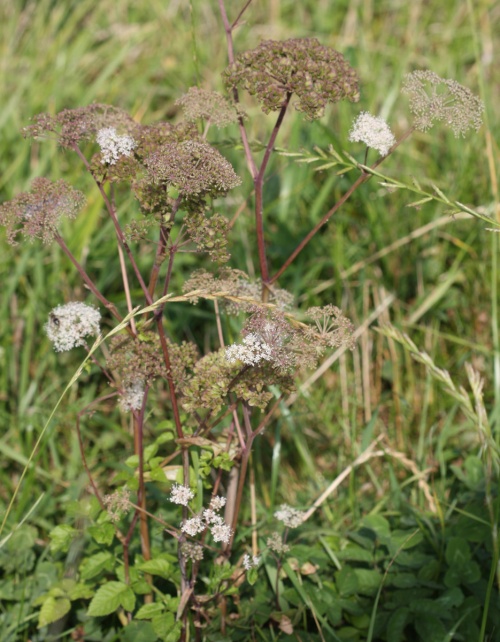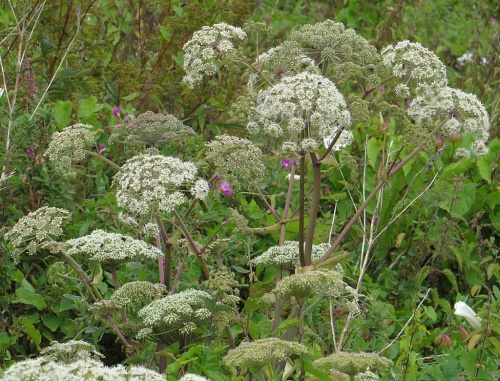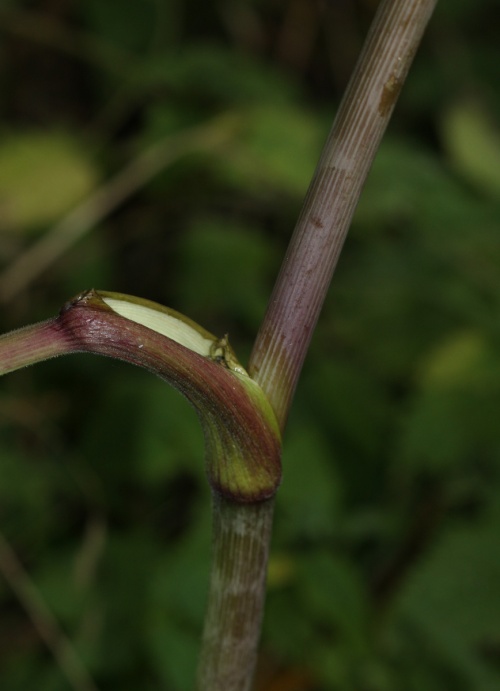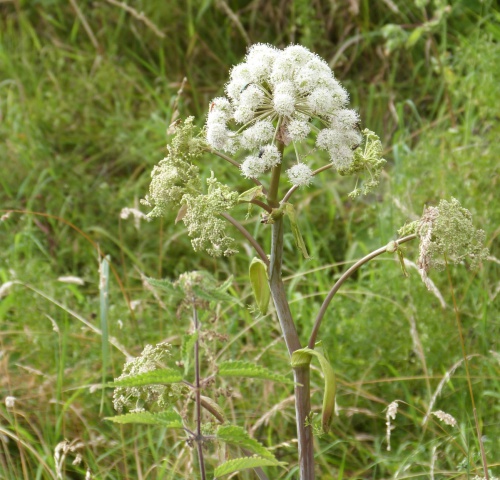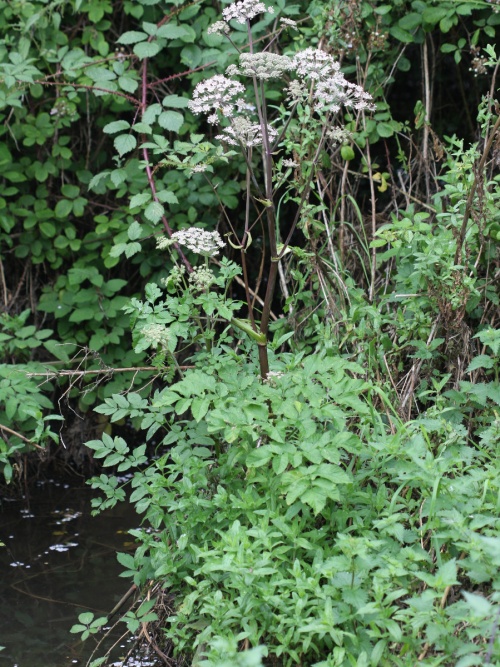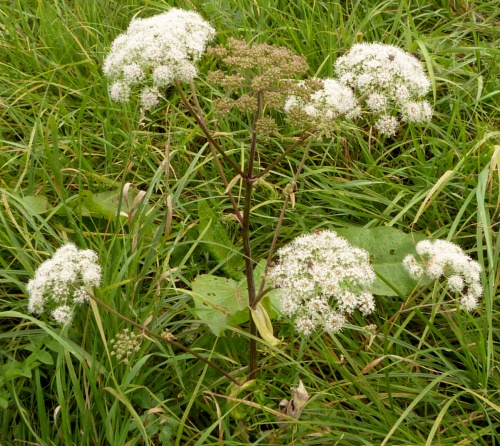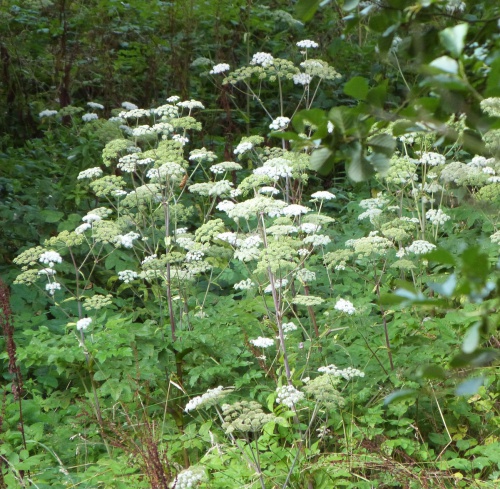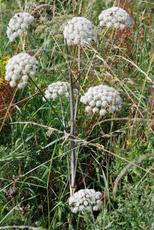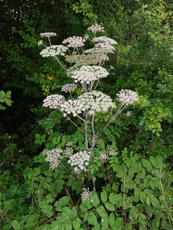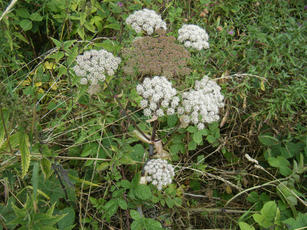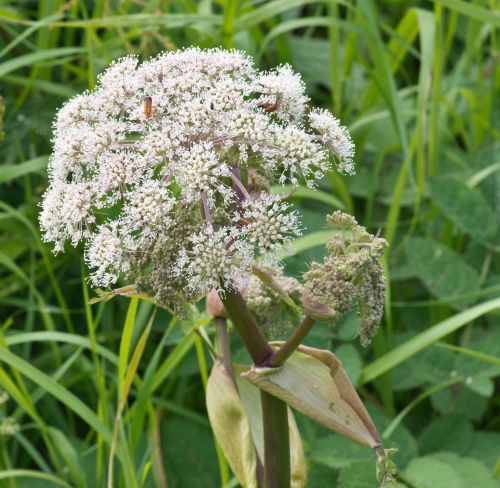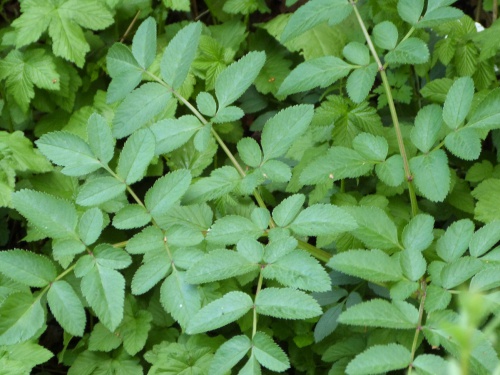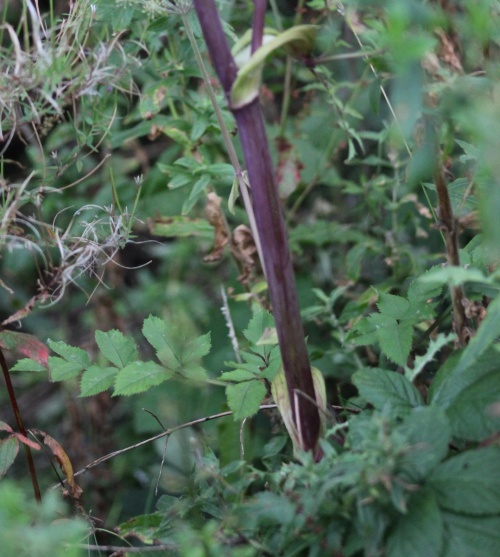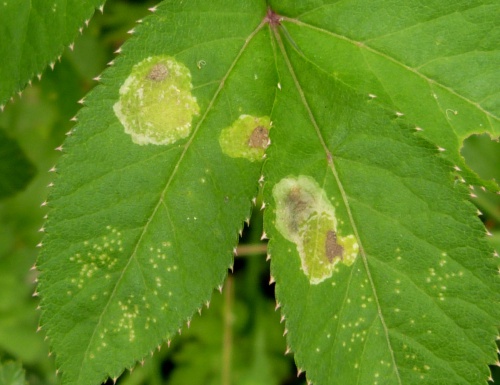Wild Angelica - Angelica sylvestris
A tall robust almost hairless plant often reaching one metre in height and sometimes 2 metres. Stems are hollow, ridged and often tinged purple. Flowers white or pinkish 2 mm in umbels. The developing umbels partially enclosed in inflated sheaths.
Glabrous, or nearly so; hollow stems; upper leaves with strongly inflated petioles; fruits flattened, oval, with thin membraneous lateral wings
Damp meadows, ditches and woods.
July to October.
Perennial.
Quite common in Britain.
Quite common in Leicestershire and Rutland. In the 1979 Flora survey of Leicestershire it was found in 328 of the 617 tetrads.
In the current Checklist (Jeeves, 2011) it is listed as Native; occasional
Leicestershire & Rutland Map
Enter a town or village to see local records
MAP KEY:
Yellow squares = NBN records (all known data)
Coloured circles = NatureSpot records: 2020+ | 2015-2019 | pre-2015
UK Map
Species profile
- Common names
- Wild Angelica
- Species group:
- Wildflowers
- Kingdom:
- Plantae
- Order:
- Apiales
- Family:
- Apiaceae
- Records on NatureSpot:
- 221
- First record:
- 01/01/1979 (Patricia Evans)
- Last record:
- 25/11/2023 (Cook, Joni)
Total records by month
% of records within its species group
10km squares with records
The latest images and records displayed below include those awaiting verification checks so we cannot guarantee that every identification is correct. Once accepted, the record displays a green tick.
In the Latest Records section, click on the header to sort A-Z, and again to sort Z-A. Use the header boxes to filter the list.
Latest images
Latest records
Phytomyza angelicae
The larvae of the fly Phytomyza angelicae mine the leaves of Wild Angelica (Angelica sylvestris). The mine is on the upper surface and usually an oval or circular blotch. Several larvae often feed together. The blotch is generally greenish when fresh but then becomes more yellow with age.




